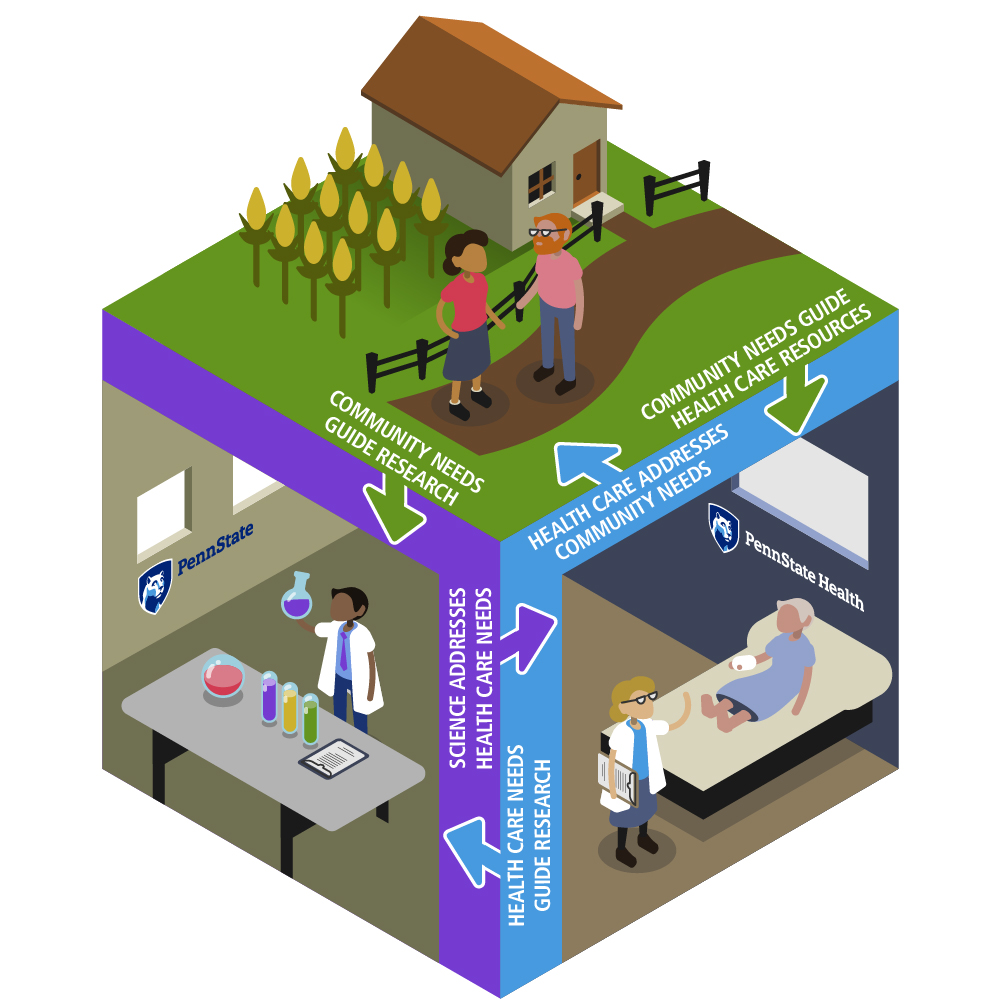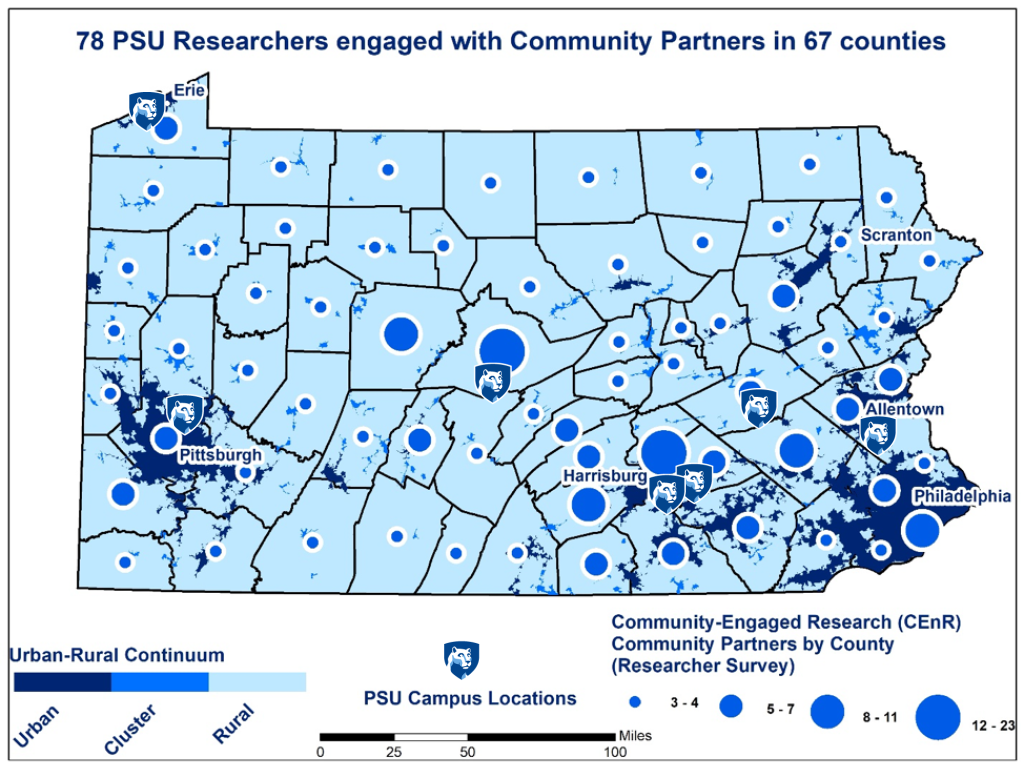Community engagement in research is increasingly being recognized as critical for translating research, not only from the bench to bedside, but also back into the community.26,27

Deeper Dive
Check out this educational video from the National Institutes of Health (NIH) National Center for Advancing Translational Sciences to learn more about the role of translational scientists!
Jump to topic
Search
CEnR in action across Penn State and Pennsylvania communities
In order to understand the landscape of CEnR at Penn State, the CHEER team undertook a survey of researchers, community partners and community health workers. Through this effort, we identified 78 Penn State researchers engaged with community partners in all 67 counties across Pennsylvania!

Check out Section 7 for some of the many examples of successful Penn State CEnR efforts across Pennsylvania communities!
Check it out!
Ready to take a dive into the literature? Check out PCORI’s comprehensive Engagement in Health Research Literature Explorer to find relevant publications within CEnR that will assist in proposal development all the way through to publication of your important work!
Three faces of a cube portray the interactions and influences between communities, scientists and health care professionals. On the top face is a community graphic which shows two citizens engaged in a conversation on a roadway outside a rural dwelling attached to a farm. On the front left face is a scientist in a lab wearing a lab coat and holding a vial of liquid. In front of them is a table with a clip board and more vials of liquid. The Penn State logo is visible on the wall underneath two windows. On the front right face is a patient and doctor conversing in an exam room. The doctor, wearing a lab coat, holds a clipboard while the patient, dressed in an exam gown, is lying on a bed with a cast on their right arm. The Penn State Health logo is visible on the wall underneath a single window. Various arrows show how the various groups influence each other. An arrow pointing from the community face to the science face says community needs guide research. An arrow pointing from the science face to the health care face says science addresses health care needs. An arrow pointing from the health care face to the science face says health care needs guide research. An arrow pointing from the health care face to the community face says health care addresses community needs. An arrow pointing from the community face to the health care face says community needs guide health care resources.
